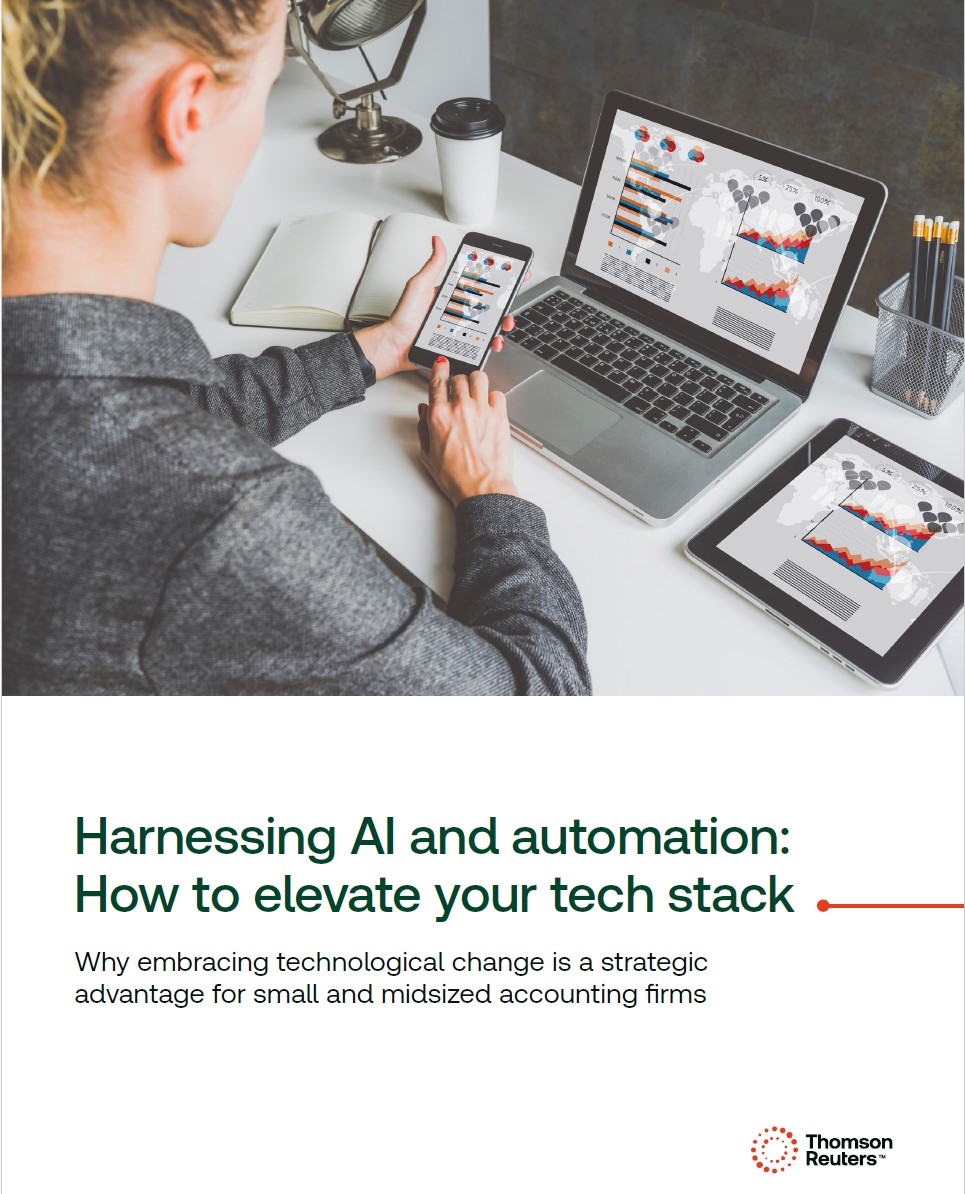Integrated tax software is no longer a luxury, it’s a strategic necessity. With tools like UltraTax CS and SurePrep, firms are cutting prep time by 39%, boosting profitability by 30%, and increasing client capacity by 65%, all while navigating the rising complexity.
What if you could cut tax preparation time by nearly 40% while increasing client capacity by 65%? For small to mid-size tax firms, this isn’t just wishful thinking—it’s the reality that integrated tax software is delivering across the industry.
And the urgency to adopt smarter solutions has never been greater. The latest updates from the One Big Beautiful Bill Act (OBBBA) have introduced a 10–15% increase in tax complexity, adding layers of compliance and accelerating turnaround expectations. As firms navigate these mounting pressures, many still struggle to unlock the full potential of their teams.
Jump to ↓
| The current challenge: Disconnected systems in firms |
| What tax integration really means |
| Efficiency gains for a smarter tax season |
| Real-world success stories with integrated tax software |
| Your firm’s competitive future |
| Ready to transform your firm with integrated tax software? |
The current challenge: Disconnected systems in firms
Small to mid-size tax firms are under increasing pressure to deliver accurate, efficient, and timely services to their clients. With growing complexity in tax regulations and rising client demands, many firms find themselves working longer hours while profit margins continue to shrink.
The culprit? Reliance on siloed platforms and manual processes. This isn’t just a workflow issue, it’s a strategic barrier. That’s where integrated tax software steps in—not just as a tool, but as a transformation.
Without integration, firms risk falling behind in both productivity and client service, which leads to:
-
- Re-entering data across systems
- Wasted time on admin tasks
- Increased risk of errors
- Shrinking profit margins
What tax integration really means
Integrated tax software creates a connected ecosystem where client information flows seamlessly between different functions—from data entry to review processes to final filing.
Instead of managing separate, siloed applications, your entire tax preparation workflow operates as one cohesive system, eliminating redundancies and reducing the risk of errors. In fact, firms that adopted integrated solutions like UltraTax CS reported:
-
- 39% reduction in prep time
- 30% boost in profitability
- 65% increase in client capacity
Efficiency gains for a smarter tax season
With tax season bringing tighter deadlines and rising complexity—especially in light of the 10–15% increase from OBBBA—firms need more than just a connected system. They need tangible, time-saving features that simplify workflows, reduce manual effort, and free up capacity for high-value client work. That’s where the real power of integration comes to life.
Integrating solutions like UltraTax CS and SurePrep further simplifies your practice and builds more dynamic processes. When tax season hits its peak, efficiency becomes essential. Here are the key benefits of integrating SurePrep with UltraTax CS:
-
- No more manual data entry: UltraTax CS auto-updates client info across returns.
- Fewer errors: Real-time syncing keeps data accurate and consistent.
- Automation with SurePrep: Documents and data flow directly into UltraTax CS.
- Smoother workflows: Integrated tools reduce friction and keep your team moving.
Faster reviews
Reviewing tax returns can be a bottleneck, especially when multiple team members are involved. UltraTax CS uses linked diagnostics and real-time updates to streamline the review process. SurePrep’s automation tools also contribute to faster, more accurate reviews by eliminating the need for manual work papers. With documents pre-organized and data pre-populated, your team can focus on analysis rather than assembly.
Supporting pass-through entities
Handling Schedule K-1 data for pass-through entities can be complex. Just one of the many benefits of integrating SurePrep with UltraTax CS is the automated transfer of data, ensuring that all relevant information is synchronized across returns.
Multi-monitor setups
UltraTax CS supports multi-monitor configurations, allowing tax professionals to work more efficiently. Whether you’re comparing documents, reviewing returns, or managing client communications, a multi-monitor setup enhances your workflow and reduces the time spent toggling between screens.
Paperless processing
Going paperless isn’t just about saving trees—it’s about transforming how your firm operates. With digital document management, you can securely store, share, and access files anytime, anywhere.
 |
|
Real-world success stories with integrated tax software
These benefits aren’t just theoretical—here’s how one firm is seeing transformational results:
Josh Haislip’s CPA firm in Texas: The end of drowning in documentation
Josh’s firm was drowning in documentation, serving clients in oil, gas, and agriculture. After integrating UltraTax CS with SurePrep, his team eliminated manual work papers and streamlined their entire workflow.
“SurePrep slices through documentation and builds a reliable, accurate product,” Josh explains. “And when that information feeds directly into UltraTax, the entire return comes together seamlessly.”
This integration between SurePrep and UltraTax CS exemplifies how automation and connectivity can transform even the most documentation-heavy practices into streamlined, client-focused operations. The result? Fewer errors, faster reviews, and weekends spent with family instead of buried in paperwork.
SSC CPAs + Advisors: Ready for transformation
Mark Worden joined a firm called SSC CPAs + Advisors in 2011 and knew immediately it was ready for some big changes. After switching to UltraTax CS integrated with SurePrep, the results show just how transformative automation and connectivity can be.
-
- SSC CPAs + Advisors reports 95–98% of returns are processed using SurePrep’s automated workflows, significantly reducing manual data entry and turnaround time.
- Automated notifications, e-signatures, and client portals have led to faster reviews, eliminated lost documents, and provided instant access to prior-year returns.
- SSC CPAs + Advisors report scalability gains without proportional increases in staff, allowing preparers to focus more on high-value analysis and client service.
These outcomes reflect more than just efficiency—they represent a strategic shift toward a digital-first, client-centered experience that sets firms apart in a competitive market.
Your firm’s competitive future
Integrated software isn’t just about efficiency—it’s about positioning your firm for growth. With UltraTax CS and SurePrep, you can:
-
- Handle more clients without burnout
- Deliver faster, more accurate returns
But integration doesn’t stop at tax prep software alone. Tools like SurePrep extend the power of UltraTax CS by automating document collection and data extraction, ensuring that client information flows directly into your system with minimal friction. This level of automation reduces manual effort and time spent, giving your team more time to focus on strategic client work.
With UltraTax CS and SurePrep working in tandem, your firm is equipped to meet rising demands, navigate increasing complexity, and stay ahead in a competitive market.
Ready to transform your practice with integrated tax software?
How much longer can your firm afford to operate with disconnected systems while your competitors gain the advantages of true integration?
Take the next step: Schedule a personalized demo of UltraTax CS to see exactly how integration can transform your firm’s workflow and bottom line. Contact our team today to discover your firm’s potential for growth through smarter technology.









